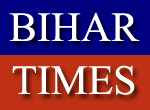|
06/11/2015 Growing maturity of Bihar electorate
|
The Assembly 2015 election in Bihar may be remembered in history for various reasons. But one aspect which has largely been ignored by political observers is the growing maturity of the electorate. Though the state is known for sharp political, social and even communal polarization people were not carried away by the passion whipped up various fiery speakers. They turned up in huge number to listen to all of them––Prime Minister Narendra Modi, chief minister Nitish Kumar, RJD supremo Lalu Prasad, Congress leaders Sonia and Rahul Gandhi, vaious Union ministers, chief ministers, leaders from the world of entertainment and film etc. They patiently lent their ears to everyone, but voted according to their conscience. They largely kept the mediapersons guessing till the last moment. Bihar had a long history of election violence. The bloodbath in Jehanabad during the 1984 Lok Sabha election and again in 1989 at Danwar-Bihta village in Bhojpur district are just two glaring examples of large scale killings. Hundreds of lives had been lost during elections in the decades of 1970s, 1980s and early 1990s. Though electoral malpractices came down drastically by mid-1990s yet elections were not totally free from violence. If the clashes between supporters of various parties ended, the administration started facing another challenge, that of the Maoists’ violence. In elections the ultras see a big opportunity to target para-military personnel and snatch arms from them. The killing of 37 para-military personnel in land mnine blasts on the first day of September 1999 Lok Sabha election in Hazaribagh-Chatra belt, then part of Bihar, was the deadliest such incident to take place on the polling day. The November 13, 2005 jail-break in Jehanabad, which led to the killing of several people and escaping of several hard-core Maoists is still fresh in the mind. The attack was carried by several hundreds of Maoist cadres in the late evening, and that too in Jehanabad town. The jail is situated not far away from the office of the district magistrate and superintendent of police. In contrast the 2015 Assembly election saw no such ugly incident notwithstanding the fact that all out efforts were made to provoke the masses. The issues which till now have never been discussed publicly were rraised for obvious political gain. Yet the people of the state, which has the lowest literacy rate, showed enormous sense of maturity. Election related violence in early 1990s was attributed to the social tension originating from the pro- and anti-Mandal reservation movements. But one fails to explain the loss of so many lives during elections in the earlier decades, when the society was not so badly divided on the caste-line. Political violence is still common in West Bengal. Even during the local bodies election, when the stakes of parties are not so high lives are lost.
|
|


